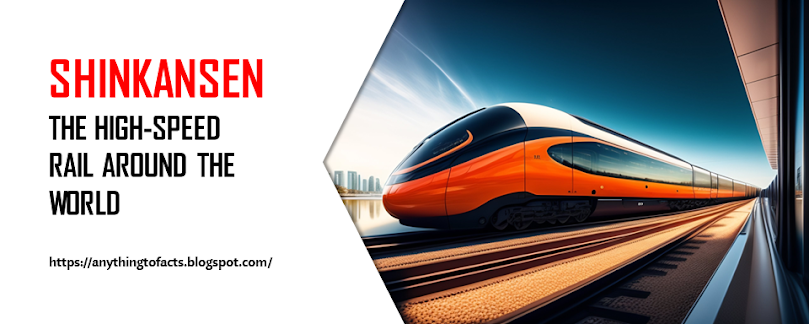- Get link
- X
- Other Apps
Featured Post
- Get link
- X
- Other Apps
SHINKANSEN : The High-speed Rail Around The World
Japan's bullet train, also known as the Shinkansen, is an iconic symbol of the country's technological innovation and efficiency. Since its introduction in 1964, the Shinkansen has become a model for high-speed rail around the world.
In this article, we'll discuss the strategy behind the success of Japan's bullet train.
Technological Innovation:
The Shinkansen was a technological marvel when it was introduced in 1964, with a top speed of 210 km/h. Since then, the technology has continued to evolve, with current models reaching speeds of up to 320 km/h. The Shinkansen's advanced technology has contributed to its success and reliability, making it a preferred mode of transportation for many commuters.
Safety and Reliability:
Safety and reliability have been central to the Shinkansen's success. The trains are equipped with advanced safety features, such as earthquake sensors and automatic train control systems, that ensure passenger safety. The trains are also known for their punctuality, with an average delay time of just 54 seconds. This reliability has helped to build trust among passengers, who know they can count on the Shinkansen to get them to their destination on time.
Comfort and Convenience:
The Shinkansen offers a comfortable and convenient travel experience for passengers. The trains are spacious, with wide seats and ample legroom, and feature amenities such as vending machines and Wi-Fi. Additionally, the trains run frequently and are accessible to passengers with disabilities, making the Shinkansen a popular choice for commuters and travelers alike.
Integration with Other Modes of Transportation:
The Shinkansen has been integrated into Japan's larger transportation network, making it easy for passengers to connect to other modes of transportation such as buses, subways, and airports. This integration has helped to make the Shinkansen a convenient option for travelers, particularly those traveling long distances.
Environmental Sustainability:
The Shinkansen is an environmentally friendly mode of transportation, with lower carbon emissions compared to cars and planes. Additionally, the trains run on electricity, with many of them powered by renewable energy sources such as wind and solar power. This commitment to sustainability has helped to position the Shinkansen as a responsible and forward-thinking transportation option.
In conclusion, the success of Japan's bullet train can be attributed to a combination of technological innovation, safety and reliability, comfort and convenience, integration with other modes of transportation, and a commitment to environmental sustainability. By focusing on these key strategies, Japan has created a transportation system that is not only efficient but also a source of national pride. As other countries look to develop their own high-speed rail systems, they can learn from Japan's experience and apply these strategies to create transportation networks that are both effective and sustainable.
Facts About SHINKANSEN - THE BULLET TRAIN of JAPAN
- The first bullet train, the Shinkansen, began operation in Japan in 1964, connecting Tokyo and Osaka.
- The Shinkansen has a maximum operating speed of 320 km/h (200 mph), although its top speed record is 603 km/h (375 mph) set by a prototype train in 2015.
- The Shinkansen operates on dedicated high-speed tracks, which are separate from conventional rail lines.
- Bullet trains are equipped with advanced safety features, such as automatic train control systems and earthquake sensors, which ensure passenger safety.
- The Shinkansen has an average delay time of just 54 seconds, making it one of the most reliable forms of transportation in the world.
- The Shinkansen has transported over 10 billion passengers since its launch, with a safety record of zero passenger fatalities due to accidents.
- Other countries have also developed their own high-speed rail systems, including China's CRH trains, France's TGV, and Spain's AVE.
- The Shinkansen has helped to stimulate economic growth in Japan by providing faster and more convenient transportation between major cities.
- The environmental impact of bullet trains is lower than that of cars and airplanes, due to their use of electricity and reduced emissions.
- The Shinkansen has inspired the development of high-speed rail systems in other countries, including the United States, which is currently exploring the possibility of building a high-speed rail system between major cities.
Thanks for reading, I hope you liked it....please follow my page for more updates.
Share it, Like it and share love to be together.
Bullet train
Comfort and Convenience
Facts
Japan
Japan's bullet train
New business idea.
Safety and Reliability
SHINKANSEN
Speed
Technological Innovation
Train
- Get link
- X
- Other Apps

Comments
Post a Comment